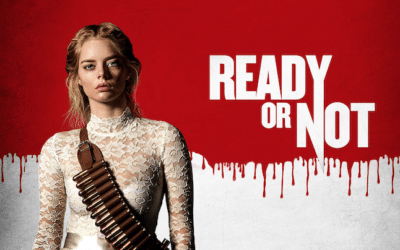Recently the History Channel aired Christmas Unwrapped: The History of Christmas. Here’s my summary of the program because I found it extremely relevant to the annual discussion of the true meaning of Christmas. The following historical facts are from the History Channel program, but the strong opinionated statements are mine.
Christmas Started Without Jesus
It turns out that early Europeans were observing a winter solstice celebration centuries before Jesus was even born. In Norse country it was called “Yule” and it lasted for as long as the enormous “Yule log” took to burn, which was about twelve days. In preparation for the cold, dark season people would kill almost all their livestock since they couldn’t feed them through the winter. The feasting and general revelry that resulted became the annual Yule celebration.
In Rome the winter solstice marked the period known as “Saturnalia.” During this festival people drank, behaved raucously and generally overturned the normal social order. While this was going on, the upper classes of Rome worshipped Mithras, the sun god, whose feast day was December 25th. Mithras was also believed to have been born in a field and worshipped by shepherds (hmm?).
In fact, the early Christians didn’t even celebrate Jesus’ birth, focusing on his resurrection. But by the fourth century the new Church needed to establish Jesus’ holy birth, so it began to put together the nativity story. It knew it would never manage to outlaw the pagan traditions already in place, so it adopted them and that’s how December 25th became Jesus’ feast day.
It Had More Sex Than Saints
In England during the middle ages, the pious went to church on December 25th for “Christ’s mass,” but most of the population just carried on as it always had on that day. Christmas was a festival of drunken revelry and sexual activity that would look more to us like Mardi Gras or New Year’s Eve. It was a saturnalian free-for-all with little connection to Jesus except in name.
By the 17th century the Puritans had had enough of this and they made attempts to outlaw Christmas in both England and the New World. These devout people saw Christmas as a debauched and depraved tradition that had to be stopped. It didn’t work, but the holiday was greatly downplayed for a long time, as evidenced by the U.S. Congress being in session on all Christmas Days for its first 67 years.
America Needed a Tradition
When the United States were established in 1776, the early Americans wanted to rid themselves of all things English, including Christmas. But over time they also needed new culturally shared holidays and a reinvention of Christmas was on the horizon.
One new aspect of the American Christmas was how it addressed the growing class divide of the industrial U.S. In the early 1800’s the holiday became quite dangerous as working class people turned it into a time of violent payback for the increasing gap between the haves and the have-nots. In response to growing economic imbalances, writers like Washington Irving and Charles Dickens created works of fiction that instilled a spirit of generosity and demonstrated sharing wealth with the poor. These popular stories gave the upper classes guidance about what their responsibility was to those who had less and established “giving” as a central Christmas theme. Christmas now gave people a chance to correct some of the socioeconomic unfairness of newly industrialized America.
The view of the family was also changing. Traditionally it had been seen as a mechanism for disciplining children and turning them into hard workers. But by the end of the 19th century the family was seen more as a nurturing body that protected childhood innocence. Christmas, with its emphasis on giving gifts, allowed people to lavish attention on children without seeming to spoil them. The holiday became a celebration of children, honoring them with presents and witnessing their expressions of pure joy.
Why Shopping Is Central
The creation of Santa Claus in the mid-1800’s did a few things: it reinforced the idea that Christmas distributes wealth, it solidified the focus on children and it removed gift-buying from the marketplace and placed it in the realm of family love and affection. This diminished the obvious commercialism of gift-buying and obligated parents to fulfill their children’s expectations. Thus did shopping become the central activity of the Christmas season.
But Where Was God?
By the late 1800’s Christmas was just about everywhere, except in church. In fact, the author of ‘Twas the Night Before Christmas was an Episcopalian minister who initially kept his authorship a secret because he thought the poem was too friviolous; after all, it didn’t mention Jesus once. The celebration of Jesus’ birth was an established part of the Catholic tradition, but for quite a while American Protestant churches pretty much ignored it. For decades they stayed closed on December 25th until their parishioners made clear that they wanted services on that day.
So much for Jesus’ birth being the real reason we have Christmas. December 25th was originally part of a pagan festival that morphed into a holiday of gift-giving that American churches didn’t want anything to do with until almost the 20th century! There was no golden age during which people observed Christmas primarily as a holy day. That idea is as much a myth as Santa Claus. Sorry Charlie Brown, but Snoopy’s not off target: Christmas is as much about the big decorated tree as it is about the manger.
Does Christmas Even Need Jesus?
By the 1920’s all of the sex and revelry were gone from Christmas and by the 1950’s it was all about kids and presents. So, where does Jesus fit into this again? Clearly a spiritual focus is appropriate since religious services recall the need to connect with a greater power. In the centuries before Christ, people needed to believe they’d survive the winter and they worshipped the sun as their source of life. Modern Christians worship the son of God, whom they recognize as the source of life.
But for as long as December 25th has been recognized as Jesus’ feast day, there have been lots of other activities going on at the same time. If Christmas were really just about Jesus, the holiday wouldn’t occupy public space as it does. Strictly religious holy days tend to be observed only by those who practice that faith. Our grand scale yuletide traditions — big decorations, big eating, big shopping — support the religious significance of the day, but they don’t really engage it.
What’s the True Meaning Again?
The History Channel’s program ends with the observation that only children understand what Christmas is really about: pure joy and celebration, and the magic and mystery of opening gifts. That’s why, even as grown ups, we often experience a moment of delight when we see a Santa truly in his role or glimpse a dazzling light display. Such moments take us back to our childhood and the unadulterated awe and glory that Christmas held for us then. Our American Christmas tradition was tailor-made for children and they are critical to its magic.
SOoo righteous religious people who say the true meaning of Christmas is about Jesus. The true meaning of Christmas includes Jesus, but today it’s just as much about children and gift-giving. There has really never been a time during which people treated December 25th as a solemn holy day. In fact, the drunken orgy it used to be caused the Puritans to try to stamp it out altogether. So although Christmas celebrates the birth of Jesus, it’s just as much about decorations and presents as it is about God, an interesting outcome for a holiday with a rich pagan history of drunkenness, gluttony and sex.



0 Comments